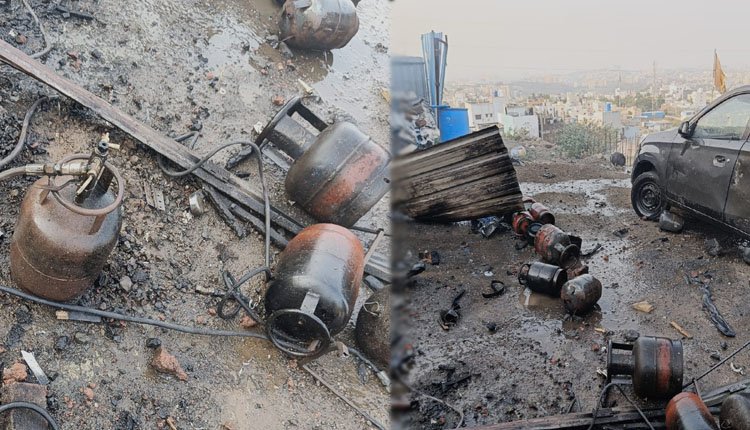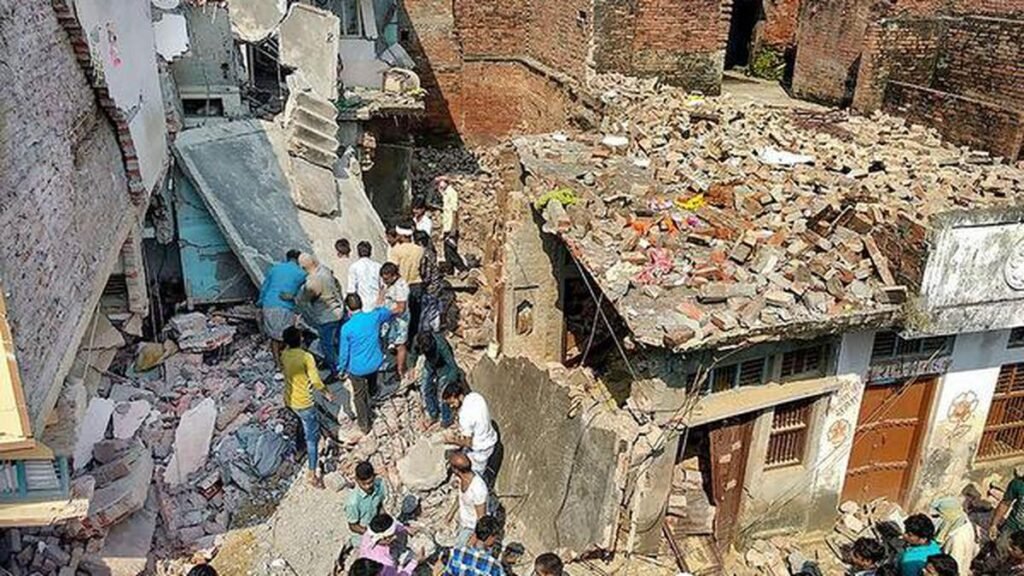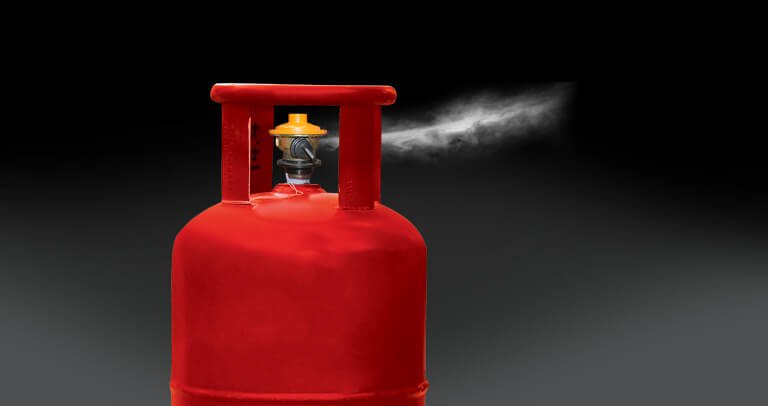followed by smoke billowing out of the affected house. Ramesh Kumar, a local resident who lives a few houses away from the scene, said, “It was terrifying. I was at home with my family when we heard the explosion. We ran outside, and there was smoke everywhere.” Local authorities and emergency services responded quickly to the situation. As soon as the fire was reported, fire brigade and ambulances rushed to the spot and the area was cordoned off to prevent further mishap. The fire brigade managed to control the fire after two hours of hard work, preventing it from spreading to nearby houses. Two persons, Sita Devi (45) and her son Mohan (20), were present inside the house at the time of the blast. Both were seriously injured and were immediately rushed to the district hospital. Doctors said Sita Devi suffered severe burns and breathing difficulties due to smoke inhalation, while Mohan has suffered multiple injuries from the debris and is currently under observation in the Intensive Care Unit (ICU). Initial investigations by the fire brigade and local police suggest that the blast was caused by gas leaking from an LPG

cylinder in the kitchen. It seems gas was leaking overnight and when someone tried to light the stove in the morning, the accumulated gas caught fire, leading to the blast. Experts are still examining the spot to confirm these initial findings. Sub-inspector Rajesh Singh, who is leading the investigation, said, “It appears to be a case of negligence regarding basic safety precautions with LPG cylinders. We urge all residents to check their gas connections regularly and report any leakage immediately to the appropriate authorities.” Impact on the community The blast has left the Rampur community in a state of shock and distress. Residents have gathered around the affected family and are providing help wherever possible. Neighbours have set up a temporary relief

centre to provide food and shelter to those affected by the blast, as some nearby houses also suffered minor damage due to the shockwave. Sunita Patel, a neighbour and close friend of the family, said, “It is a very close-knit community in Rampur. We are all shocked by this incident. We are trying everything possible to help Sita Devi and her family in this difficult time.” Safety concerns and demand for action The incident has sparked a fresh debate on the safety of LPG cylinders in Indian households. With over 200 million households using LPG cylinders for cooking, safety remains a serious concern. Several similar incidents have been reported across the country, often due to poor maintenance, lack of awareness or faulty equipment. Experts are urging the government and local authorities to enforce strict safety rules and run awareness campaigns to educate people about proper handling of LPG and safety measures. Public safety expert Dr Meera Chaudhary said,

“Many people are unaware of the basic safety precautions to be taken while handling LPG cylinders. Regular checks, proper ventilation and timely maintenance are important to prevent such accidents.” After the incident, Rampur District Magistrate Anil Yadav visited the spot and assured residents that a thorough investigation would be conducted. He also announced compensation for the victims and their families. Yadav said, “We are deeply saddened by this unfortunate incident. The administration will take all necessary steps to help the affected family and ensure that such incidents do not happen again.” The local Member of Parliament (MP) also expressed concern over the incident and highlighted the need for better safety protocols. He said in a press release, “This is not just an incident; it is about ensuring the safety of every household that uses LPG. We need to work together to improve safety standards and awareness.” This incident is a grim reminder of the importance of safety while handling LPG cylinders at home. Here are some important tips that experts recommend to avoid such disasters: Check for leaks regularly: Always check the gas cylinder and its connections for leaks. Use a soap solution; if bubbles form around the connection points, it is a sign of a leak.
